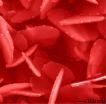(Press-News.org) Argonne, ILL—For the first time scientists have been able to watch nanoparticles grow from the earliest stages of their formation. Nanoparticles are the foundation of nanotechnology and their performance depends on their structure, composition, and size. Researchers will now be able to develop ways to control conditions under which they are grown. The breakthrough will affect a wide range of applications including solar-cell technology and chemical and biological sensors. The research is published in NANOLetters.
As coauthor Wenge Yang of the Carnegie Institution's Geophysical Laboratory explained: "It's been very difficult to watch these tiny particles be born and grow in the past because traditional techniques require that the sample be in a vacuum and many nanoparticles are grown in a metal-conducting liquid. So we have not been able to see how different conditions affect the particles, much less understand how we can tweak the conditions to get a desired effect."
These researchers work at the Center for Nanoscale Materials and the Advanced Photon Source (APS)–both operated by Argonne National Laboratory–and the High Pressure Synergetic Consortium (HPSynC), a program jointly run by the Geophysical Laboratory and Argonne. The scientists used high-energy X-rays from the APS to carry out diffraction studies that enabled them to gain information on the crystal structure of the materials. Thanks to the highly brilliant and high penetration of this X-ray source–the largest of its kind in the US–the researchers were able to watch the crystals grow from the beginning of their lives. The atoms scatter very short wavelength X-rays and the resulting diffraction pattern reveals the structure of these unusual particles. Quite often the chemical reaction occurs in a very short time and then evolves. The scientists used highly focused high-energy X-rays and a fast area detector, the key components to make this investigation possible. This is the first time-resolved study of the evolution of nanoparticles from the time they are born.
HPSynC, is also a part of the Energy Frontier for Research in Extreme Environments (EFree) Center, an Energy Frontier Research Center supported at Carnegie by DOE-BES. One of the missions of this center is to harness new synchrotron radiation techniques for in situ studies of materials structure and dynamics in extreme conditions and thereby to understand and produce new energy materials.
"This study shows the promise of new techniques for probing crystal growth in real time. Our ultimate goal is to use these new methods to track chemical reactions as they occur under a variety of conditions, including variable pressures and temperatures, and to use that knowledge to design and make new materials for energy applications. This is a major thrust area of the HPSynC program that we have launched in partnership with Argonne National Laboratory," remarked Russell Hemley, the director of Geophysical Laboratory.
INFORMATION:
The Carnegie Institution for Science (carnegiescience.edu ) is a private, nonprofit organization headquartered in Washington, D.C., with six research departments throughout the U.S. Since its founding in 1902, the Carnegie Institution has been a pioneering force in basic scientific research. Carnegie scientists are leaders in plant biology, developmental biology, astronomy, materials science, global ecology, and Earth and planetary science.
Breakthrough in nanocrystals growth
2010-10-19
ELSE PRESS RELEASES FROM THIS DATE:
How do beauty product ads affect consumer self esteem and purchasing?
2010-10-19
A new study in the Journal of Consumer Research found that ads featuring beauty products actually lower female consumers' self-esteem.
"One of the signature strengths of the advertising industry lies in its ability to transform seemingly mundane objects into highly desirable products," write authors Debra Trampe (University of Groningen, the Netherlands), Diederik A. Stapel (Tilburg University), and Frans W. Siero (University of Groningen). In an advertisement, a lipstick situated next to a stiletto heel represents glamour and a teddy bear in an ad for fabric softener ...
Is team science productive?
2010-10-19
PHILADELPHIA - Taking a cue from the world of business-performance experts and baseball talent scouts, Penn Medicine translational medicine researchers are among the first to find a way to measure the productivity of collaborations in a young, emerging institute. They published their findings the most recent issue of Science Translational Medicine.
While metrics exist to measure the contributions of individual scientists, judging the effectiveness of team science has been more challenging. Reasoning that team science produces papers and grants, first author postdoctoral ...
Benign envy sells iPhones, but malicious envy drives consumers to BlackBerries
2010-10-19
People are willing to pay more for products that elicit their envy—but that's only when they are motivated by a positive, benign form of envy, according to a new study in the Journal of Consumer Research.
"Our studies showed that people who had been made envious of someone who owned an iPhone were willing to pay 80 Euros more on average," write authors Niels van de Ven, Marcel Zeelenberg, and Rik Pieters (Tilburg University).
The researchers made some important discoveries about the motivations that result from different kinds of envy. "Note that two types of envy exist: ...
Diabetic adults' conditions improved after phone calls with fellow patients
2010-10-19
The findings, published Oct. 19 in the Annals of Internal Medicine, showed the peer partner program resulted in lower glycated hemoglobin (HbA1c) levels after six months among men with uncontrolled diabetes.
The research was based on a peer partnership program established by the Veterans Affairs Ann Arbor Health System and the University of Michigan Medical School.
Each peer pair received initial brief training in peer communication skills and was expected to communicate by telephone at least once a week about their mutual efforts to improve diabetes control. Program ...
Computational model of swimming fish could inspire design of robots or medical prosthetics
2010-10-19
VIDEO:
The lamprey's body is gray, and the areas where muscle is active are shown with black lines. Note that the active muscle moves backwards slightly faster than the fish...
Click here for more information.
Scientists at the University of Maryland and Tulane University have developed a computational model of a swimming fish that is the first to address the interaction of both internal and external forces on locomotion. The interdisciplinary research team simulated how ...
Generous paupers and stingy princes? Power and consumer spending
2010-10-19
How do people decide how much to spend on purchases for themselves versus others? A new study in the Journal of Consumer Research says it all depends on how powerful we feel at the moment of choice.
"We ask whether the powerful and powerless differentially value the self versus others, and whether this, in turn, translates into observable differences in their spending behavior," write authors Derek D. Rucker, David Dubois, and Adam D. Galinsky (Kellogg School at Northwestern University).
The authors conducted five experiments where they manipulated participants' states ...
Would you sleep on a chunk of ice? Building your 'experience resume'
2010-10-19
If sleeping on a bed of ice or eating bacon-flavored ice cream doesn't sound too appealing, consider the tale you'll have to tell about it later. According to a new study in the Journal of Consumer Research, some people can't resist a chance to collect experiences.
"Recent marketing trends suggest that many consumers are attracted to unusual and novel consumption experiences and choose vacations, leisure activities, and celebrations that are predicted to be less pleasurable and enjoyable," write authors Anat Keinan (Harvard Business School) and Ran Kivetz (Columbia Business ...
Cash is healthier? Credit and debit increase impulsive food purchases
2010-10-19
People are more likely to buy unhealthy foods when they pay using credit or debit cards, according to a new study in the Journal of Consumer Research.
"Two factors contribute to this intriguing effect," write authors Manoj Thomas (Cornell University), Kalpesh Kaushik Desai (State University of New York, Binghamton), and Satheeshkumar Seenivasan (State University of New York, Buffalo). "First, there is a correlation between unhealthiness and impulsiveness of food items: Unhealthy food items also tend to elicit impulsive responses. Second, cash payments are psychologically ...
Consortium: Higher ed curricula not keeping pace with societal, tech changes
2010-10-19
The structure of the university in the 21st century is changing rapidly after its evolution into a multiversity in the 20th century. But as universities are being restructured to best serve the society of tomorrow, are their curricula reflecting these changes and the development of new and possibly even unformulated new disciplines and areas of inquiry?
"No," says a consortium of educators that range from Arizona State University to University of New Delhi, India, and Wissenschaftskolleg zu Berlin , Germany, who have launched a website (www.curriculumreform.org), hoping ...
Treating cancer with light
2010-10-19
WASHINGTON, Oct. 18 – Can skin cancer be treated with light? Scientists at the University of California, Irvine (UC Irvine), believe so. They're exploring new ways to image cancerous lesions using LEDs that might advance a technique for treating cancer called photodynamic therapy (PDT) -- work that they will describe at the Optical Society's (OSA) 94th annual meeting, Frontiers in Optics (FiO) 2010 at the Rochester Riverside Convention Center in Rochester, N.Y., from Oct. 24-28.
In PDT, photosensitizing chemicals that absorb light are injected into a tumor, which is ...


